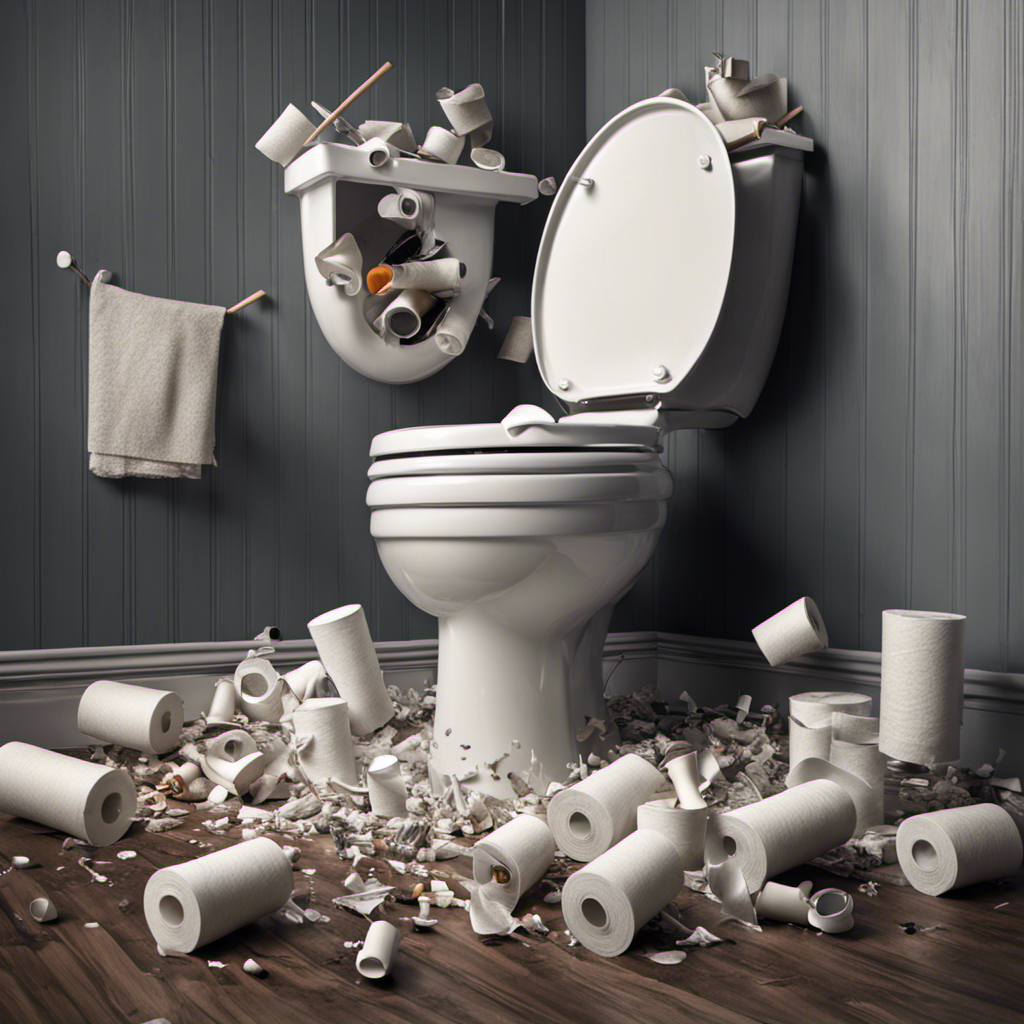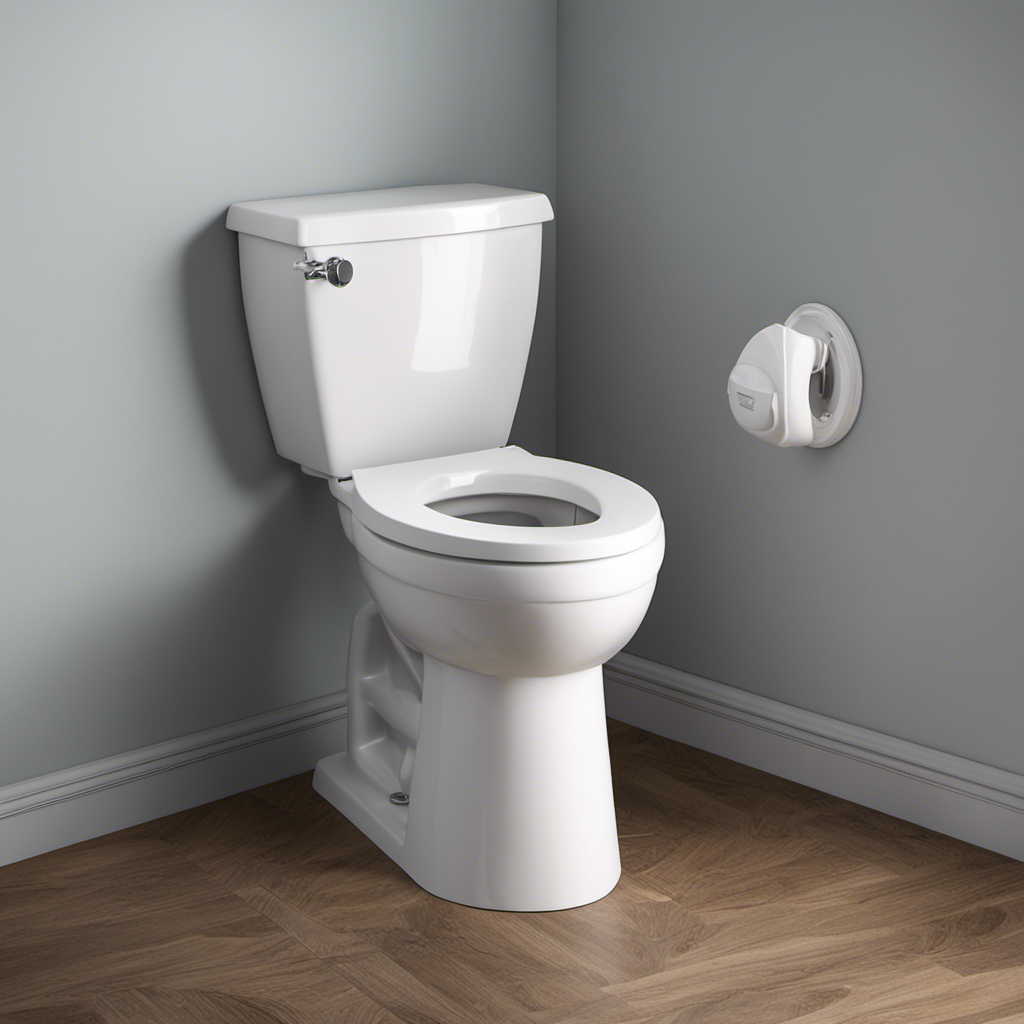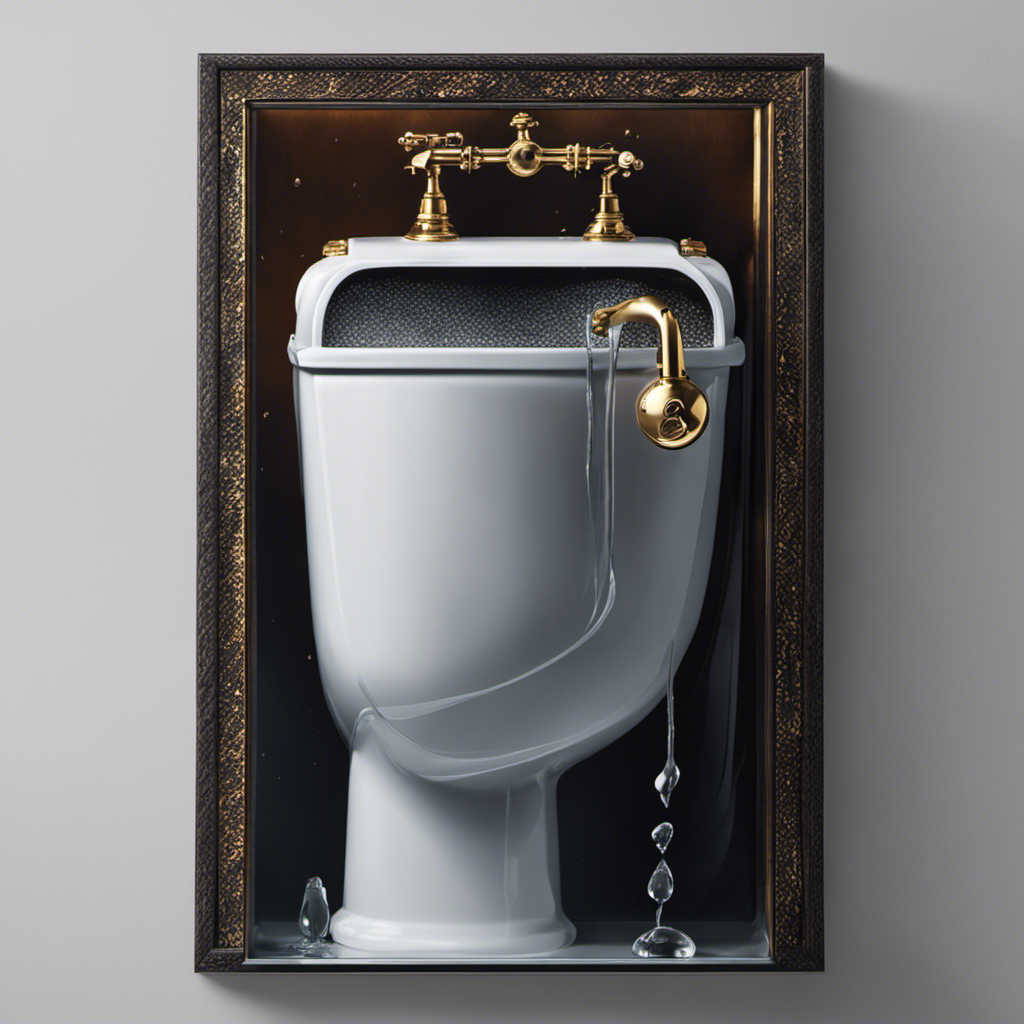I’ve been there before – standing in front of a stubborn toilet that just won’t flush all the way. It’s frustrating, inconvenient, and can leave you feeling a bit helpless. But fear not, because I’m here to help you understand the common causes and solutions to this pesky problem.
In this article, we’ll dive into the inner workings of your toilet, explore potential clogs, and discuss the importance of proper water levels. So, let’s roll up our sleeves and get ready to fix that weak flush once and for all.
Key Takeaways
- Common causes of incomplete flushing include clogged drains, buildup of debris in drain pipes, toilet bowl stains, and rough surfaces hindering water flow.
- Understanding the flushing mechanism is crucial, including the lift of the flush valve to allow water flow, the control of water level in the tank by the fill valve, and the creation of suction for waste removal by the siphon jet.
- Checking for clogs in the toilet involves inspecting the bowl for visible clogs, looking for excessive toilet paper or foreign objects, using a plunger to dislodge visible clogs, and calling a professional plumber for stubborn clogs.
- To fix a weak flush, steps include adjusting the water level in the toilet tank, ensuring sufficient force to clear clogs, using a plunger or plumbing snake to remove clogs, and restoring proper flushing function through correct techniques.
Common Causes of Incomplete Flushing
One of the most common causes of incomplete flushing is a clogged drain. When the drain is blocked, water cannot flow freely, resulting in weak or incomplete flushes. This can be caused by a buildup of debris, such as toilet paper or foreign objects, in the drain pipes.
To resolve this issue, it is important to clear the clog by using a plunger or a drain snake.
Additionally, another cause of incomplete flushing can be toilet bowl stains. These stains can build up over time and create a rough surface that hinders the flow of water. Regular toilet tank cleaning can help prevent these stains and ensure a smooth and efficient flush.
Understanding the Flushing Mechanism
To understand why your toilet doesn’t fully flush, take a closer look at the mechanism inside. The toilet flushing mechanism consists of several components that work together to create a powerful flush.
Here are three key elements to consider:
-
Flush Valve: This is a rubber flapper or a tower-style valve that lifts when you push the flush handle. It allows water to rush from the tank into the toilet bowl, creating a forceful flush.
-
Fill Valve: The fill valve controls the water level in the toilet tank. If the water level is too low, it can affect the flushing power. Adjusting the fill valve can help ensure the proper amount of water is released during each flush.
-
Siphon Jet: Located at the bottom of the toilet bowl, the siphon jet is responsible for creating the suction needed to remove waste. If it becomes clogged or blocked, it can hinder the flushing process.
How to Check for Clogs in the Toilet
Check if there are any visible clogs in the toilet bowl before attempting to flush. This is an important step in toilet maintenance and is often recommended by plumbers.
When a toilet won’t flush all the way, it is usually due to a blockage in the pipes. To check for clogs, start by inspecting the bowl. Look for any objects, such as excessive toilet paper or foreign objects, that may be obstructing the flow of water.
If you see any visible clogs, use a plunger to try and dislodge them. If the clog is stubborn and won’t budge, you may need to call a professional plumber for further assistance.
Regularly checking for and removing visible clogs can help maintain the proper functioning of your toilet.
Steps to Fix a Weak Flush
When it comes to fixing a weak flush, two key points to consider are water level adjustment and clog removal techniques.
Adjusting the water level in the toilet tank can help ensure a stronger flush by providing the necessary force to clear any clogs.
Additionally, knowing the right techniques to remove clogs, such as using a plunger or a plumbing snake, can be essential in restoring a proper flushing function to your toilet.
Water Level Adjustment
The water level in your toilet may be too low, causing the incomplete flush. This occurs when there isn’t enough water in the toilet bowl to create the necessary pressure for a complete flush.
Adjusting the water level can help resolve this issue. Here are a few steps to adjust the water level in your toilet:
-
Locate the fill valve: The fill valve is usually located on the left side of the toilet tank. It controls the water level in the tank.
-
Adjust the water level: Use a screwdriver to turn the adjustment screw on the fill valve. Turning it clockwise will increase the water level, while turning it counterclockwise will decrease the water level.
-
Test the flush: After making the adjustment, flush the toilet to see if the water level is now sufficient for a complete flush.
Clog Removal Techniques
To unclog your toilet effectively, start by using a plunger to create suction and dislodge the blockage.
Begin by ensuring that there is enough water in the toilet bowl to cover the plunger’s suction cup. Place the plunger over the drain hole, making sure it forms a tight seal.
Then, push down firmly and pull up quickly, creating a suction effect that can help dislodge the clog. Repeat this plunging motion several times until the water starts to drain.
If the plunger technique doesn’t work, you can try using a toilet auger or a drain snake to break up the blockage. Remember to be cautious when using these tools, as they can cause damage to the toilet bowl if not used properly.
Importance of Proper Water Level in the Tank
Maintaining the proper water level in the toilet tank is crucial for effective flushing. Ensuring that the tank has enough water allows for a strong and efficient flush, preventing clogs or incomplete flushes.
Proper toilet tank maintenance is essential to keep the water level at the optimal level. Here are three important things to consider:
-
Adjust the fill valve: The fill valve controls the water level in the tank. Adjusting it to the recommended level ensures there is enough water for a powerful flush.
-
Check for leaks: A leaking tank can result in a lower water level, causing weak flushes. Regularly inspect the tank for any leaks and repair them promptly.
-
Practice water conservation: While maintaining the proper water level is necessary, it is also important to conserve water. Consider installing a dual-flush system or using a toilet tank displacement device to reduce water usage.
Troubleshooting Other Potential Issues
When troubleshooting issues with a toilet that won’t flush properly, there are a few key points to consider.
First, adjusting the water level in the tank can often solve the problem.
The flapper chain length and the presence of a clogged drain pipe are also factors to investigate.
Water Level Adjustment
The water level in your toilet needs to be adjusted for it to flush properly. When the water level is too low, there may not be enough force to effectively empty the bowl. Conversely, if the water level is too high, it can cause an overflow or inefficient flushing.
To adjust the water level in your toilet, follow these steps:
- Locate the water level adjustment screw or float arm in the toilet tank.
- Turn the screw counterclockwise to lower the water level or clockwise to raise it.
- Flush the toilet and observe the water level in the bowl. Adjust as needed until it reaches the optimal level.
Flapper Chain Length
After adjusting the water level in my toilet, I realized that the flush still wasn’t working properly. It was time to move on to the next step in toilet maintenance: checking the flapper chain length.
The flapper is responsible for sealing the flush valve and allowing water to flow into the toilet bowl. If the chain connecting the flapper to the flush handle is too long or too short, it can cause issues with flushing. To fix this, I needed to adjust the length of the chain by either tightening or loosening it.
However, if the flapper is old or damaged, a flapper replacement may be necessary. This is a relatively simple task that can greatly improve the flushing efficiency of your toilet.
Clogged Drain Pipe
To fix a clogged drain pipe, you can try using a plunger or a drain snake. Both of these tools are effective in clearing blockages and restoring proper drainage in your toilet bowl. Here are three techniques you can try:
-
Plunger Technique: Start by placing the plunger over the drain hole in the toilet bowl. Ensure a tight seal is formed. Then, vigorously push and pull the plunger to create suction and dislodge the clog. Repeat this motion several times until the water starts to drain.
-
Drain Snake: If the plunger doesn’t work, you can use a drain snake. Insert the snake into the drain pipe and rotate it clockwise while pushing it forward. This will help break up the clog and allow water to flow freely again.
-
Hot Water Flush: Sometimes, pouring hot water into the toilet bowl can help dissolve the clog. Boil a pot of water and carefully pour it into the bowl. Let it sit for a few minutes before attempting to flush.
Conclusion
In conclusion, it can be frustrating when your toilet won’t flush all the way. But fear not, there are simple solutions to this common issue.
By understanding the flushing mechanism and checking for clogs, you can easily fix a weak flush. Additionally, maintaining the proper water level in the tank is crucial for optimal flushing performance.
Remember to troubleshoot any other potential issues that might be causing the problem. With these tips, you’ll become a toilet troubleshooting expert in no time.










